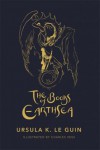Arbie's Unoriginally Titled Book Blog
It's a blog! Mainly of book reviews.
Currently reading
Shaman, Kim Stanley Robinson

After two bull's eyes in a row (Galileo and 2312) Shaman isn't exactly a miss but it is off centre. It's a deceptively long book, being a not alarming 456p until you notice the size of the print and realise you should add about 200p to get a fair comparison with your run-of-the-mill thriller paperback. Some of the problems relate to this length, one way or another. The most fundamental being that there is no plot worth mentioning for the entire first half of the book, making it fairly slow going. There are various events, or things mentioned seemingly in passing, where one thinks, oh! I bet that turns out to be important later! And they all do, but not until at least the half-way mark, some of them not until very near the end. So the set up just goes on and on. It's not boring but there is nothing driving it.
It's not the only KSR book with plot/pacing problems and I think I understand why. Much of the time what KSR is trying to do is show us another way to live; a way things could be - a way that variously seems better or worse than that of contemporary Western society, depending on which book you're talking about. The difficulty is showcasing the inner workings of a society whilst at the same time telling an entertaining story about it, when often the kind of society one wants to showcase has little by way of conflict. It's easy to tell an exciting story if you set it in a real or pseudo-medieval society where power-seekers resort to conspiracy and violence with about equal frequency and efficacy. Much harder if you're trying to talk about social constructs that intrinsically dampen violent conflict.
So in the first half of this book we see Loon's world, a paleolithic, ice-age realm where homo sapiens sapiens lives in packs, hunting and gathering alongside other hominids and in fact almost everything else; because the people don't see nearly as much distinction between themselves and the other creatures of the forests and steppes and ice-sheets as we do. We see it in great detail but at an ambulatory pace that left me wondering if anything was ever going to happen.
Another problem is that KSR's very distinctive writing style which employs the inner voice of the viewpoint characters in a way that borders stream-of-conciousness territory goes a little awry here, because the people here sound too much like other characters in other books. Loon is a bit too much like that guy working for the NSF in Washington in 50 Degrees Below, for instance. Sometimes he literally sounds like a modern American, "I guess", "I figured." Which is weird because the opposite mistake occurs, too. KSR makes up a whole vocabulary surrounding sex that just sounds silly; the characters' thoughts and speech is presented in English, so why not just use natural English terms - there are heaps of them. Occasionally he slips and does exactly that and it reads much better - more natural, less stilted. And talking of speech, why does he use a dash to indicate it, instead of quote marks? It is jarring at first and doesn't seem to have any reason or beneficial effect.
Then - Loon is a trainee shaman - but this society seems to be the least superstitious stone age society I've ever read about. It's just not convincing. If you want to get a convincing idea of what shamanistic society and practice was like from fiction you're better off with Robert Holdstock, or Alan Garner's Boneland.
So far, so negative but what of the second half of the book and where did a 3.5 star rating come from?
Well, after two years or so of wandering about with Loon, something very predictable happens - but it triggers a great sequence reminiscent of part of KSR's Antarctica and Ursula LeGuin's Left Hand of Darkness and the pace accelerates. And the first half of the book is never dull - just slow.
There's nothing new here, thematically, but the book does present something I've never seen before - a stone age Utopia. As with other Utopian visions from KSR, it attempts to be realistic and say that Utopia would always be under threat - that it would have to be worked at, constantly - the price of Paradise is eternal effort, apparently. And it's an earthly Paradise, so there's nothing to stop dreadful contingency or pissed off wildlife or really bad weather messing it up for you...
Really though, the problem is that we can't start from there; no-one's going back to living in a paleolithic manner once they have modern medicine and a decent broadband connection. Not permanently and en-mass anyway. So we need to figure out how to get from here to Utopia. To some extent KSR has tackled this, too; the Mars trilogy for sure, the Science in the Capital sequence to some extent, too. Because, as far as KSR is concerned, living in harmony with the natural world is the key to Utopia. It's a shame then, that paleolithic humans probably weren't in such harmony any way - they are believed to have been (in a rather convoluted and unconscious way) responsible for the extinction of numerous North American paleo-megafauna species. There is no harmony in nature; it's a constant evolution driven by the interaction of all species with each other and their changing environment. The difference between Loon's people and ours is the scale of our impact and the awareness that we are responsible.
 2
2










